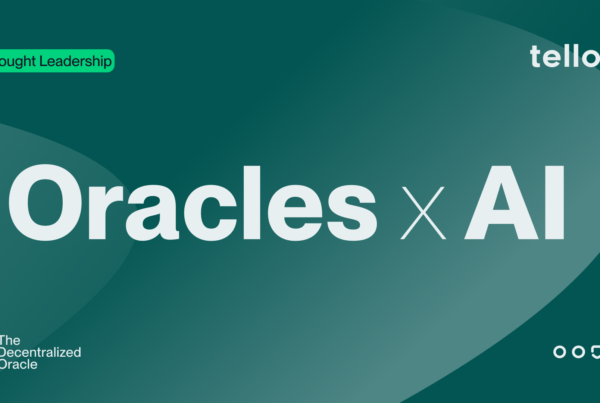You’ve heard the cries in every altcoin group on Telegram: “We need more liquidity!”, “If only we can get on “XYZ exchange” and get some real liquidity in our token”, or the more subtle “we should hire market makers for the token.”
Liquidity is hailed as a godsend. The theory is that market makers and larger exchanges beget liquidity, and liquidity begets large buyers, which in turn allows the price to rise and early holders to profit. But the theory is flawed. It feeds into the myth of this being a widely used commodity when it’s not. It’s about the illusion of use, not about building great protocols that have actual users with natural liquidity flowing from properly valued fundamentals and it’s not about setting the project up for long term success.
Let’s break this down, but first let’s clarify what liquidity is:
Liquidity is the availability of an asset, usually referring to the ability to buy/sell in large amounts without materially affecting the price.
This sounds great, but we need to be careful not to put the cart before the horse. Liquidity is a byproduct of a widely used / demanded product, not something that leads to one.
Imagine a scenario where you have a naturally liquid asset, say crude oil, for example. You have lots of people who need to buy it (anyone driving a car) and you have people who have lots of it (e.g. Saudi Arabia). Now they need to buy it on a frequent basis and the supplier gets more on a daily basis, and wants to sell it as fast as he can (it’s expensive to store). This is natural liquidity. Lots of demand, lots of selling. If there was just one supplier, that would be a monopoly and he could control the price if you wanted to buy it. If there were very few buyers (or just one or two buyers that come about infrequently), then the seller would have to hold it.
The job of a market maker is to bridge the gap between buyers and sellers. We realize that buyers may not always (24/7) want to buy and sellers may not always want to sell. So what a market maker does is buy from seller and hold it until a buyer comes along. Of course, he takes a spread, but this is a natural market maker. If he thinks that it will take a long time for a buyer to come along or if he thinks that the asset could drop in value during his time holding it, he will require a larger spread. So if there are infrequent buyers (or sellers), market makers must charge larger spreads in order to stay profitable.
Now that we understand what liquidity is and why market makers provide it, the real questions we must ask ourselves -do we really want it and why would something be illiquid?
Smaller market capitalizations mean lower amounts of liquidity…
If you buy 5% of the token, it stands to reason you should move the price.
For coins like ours, with last month a $2M market cap, a buy order of $20,000 is literally 1% of the token price. For BTC, with a market cap of 157 billion, this is equivalent to 1.5 Billion dollars’ worth of new buy orders. This really puts into perspective how unnatural it would be if that kind of buy didn’t move the market.
Many crypto investors expect to be able to buy 5 or even 6 figure amounts in small market cap tokens at a discount. Early stage projects shouldn’t feel compelled to provide market makers or unnatural amounts of liquidity on their token; the let buyers and sellers move the price.
Early stage companies should focus on building not managing a price
Traditionally, when a VC invests in a company, the asset they receive in return for their money is private equity; an illiquid asset. The reason is that you don’t want them to have a liquid asset. When they give you money for your early stage startup, that’s it. They don’t get to resell it. If they expect a return, they better help you grow.
With crypto, that notion has gone out the window. Early investors can buy into a project and they can cash out anytime. There’s no long-term incentive and this actually hurts early founders. You see it constantly in this space. Early stage crypto companies are forced to constantly manage perceptions about their coin, their utility, their marketing efforts, the hype, the FUD. A fast moving software company needs a fervent drive toward a product-market fit with constant iterations and a fast recognition of needed changes. The last thing they need is to manage is the constant opinion of every investor they may have. Liquidity and the ability for anyone to buy in or sell out of your company has forced founders into making vague statements to the public with misleading or often meaningless announcements to placate the holders who desire a constant feed of good news to justify their investments.
They pry for and even demand as much information as they can get from the founders. And you can understand why, because:
Liquidity unequally benefits those with insider information
All parties in crypto are not all privy to the same information. As with any early stage start up, asymmetric information is present in any decision. When you get to be a large publicly traded company, everything is public information and the stuff that is not is literally illegal to trade against (insider trading). In a startup, that just isn’t true. Lots of people know market moving information well before the public and only a principled few don’t trade on it.
If you are a normal holder who doesn’t have this information, you should fear liquidity.
Imagine a project that knows they are about to make a very large partnership announcement. If there’s a large amount of liquidity, they can buy tokens before and dump them on the market afterwards. This hurts all of those new buyers who now had to buy in at a higher price.
But more importantly for the current holders, imagine that a project got a letter from the SEC or found a bug in their code. Now they can dump their tokens on the market. The VC’s who they call for advice got informed before the community and dump even before the team. It’s a dangerous game and you are completely out of control.
You should want very little liquidity.
You should want it such that if someone wants to sell out, they either have to find their own buyer (who can then question why they want to sell), or it should take a long time and the price should adjust accordingly to the information this sell order might reveal.
Is being a difficult to buy coin a bad thing?
The first argument against liquidity is more crypto focused. Crypto-currency companies need to figure out who their customer is and what they want from them. They also need to be honest about whether their coin is actually illiquid or just illiquid to the standards of the currently inflated markets. If someone really wants to buy your coin to use (they’re willing to go to any exchange and buy at a small premium), can they? Almost always the question is yes, and this is the issue. You don’t need to make it as easy as a button click to buy your coin.
If you want speculators who hold your coin on an exchange, then fine. But if you have a coin that you expect users to stake, use for transactions, utilize in your voting protocol, or some other function; you need educated holders. You want a community of people who know about your project, can use and explain your product, and partake in every aspect of the governance. When you start expecting this of your community, the idea that they may need to take a day or two to buy their desired amount is a small task compared to the civic responsibilities you hope they’re taking on.
Liquidity is not all bad.
It’s great when new buyers can buy in and sellers can sell out at a fair price. It’s great when your token is readily available in many formats/ places for parties to interact with it.
But it should come with time and use. If a product is used and there is a healthy demand and supply of the asset, liquidity will come naturally and venues will seek to list it because of the desires of their own users.
But for current holders and the project themselves, pushing liquidity too early on your product can be a wolf in sheep’s clothing. Going after large exchanges, paying market makers, or even providing your own capital is a losing strategy. Focus on the product and the fit and the liquidity will come. Trying to do it backwards will not give you the community you want or the outcome you seek.



